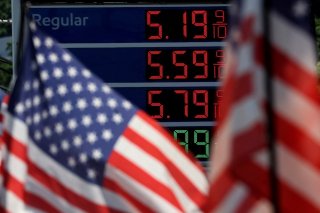Diesel Prices Soar As Average Gas Price Falls Again
It’s the return of week-to-week volatility, as the average gas price dropped 5.4 cents to $3.86 per gallon.
Earlier this year, the average gas price in the United States had a long streak of going up, followed by a steady decline for the bulk of the summer. The decline ended early in the fall but after a few weeks of increasing averages, gas prices have reversed again.
It’s the return of week-to-week volatility, as the average gas price dropped 5.4 cents to $3.86 per gallon, according to GasBuddy’s weekly report. That price is still more than 20 cents higher than a month ago, and 56.6 cents per gallon higher than a year ago.
“After a sharp rise in the national average over the last few weeks, we’ve seen an abrupt, yet expected decline as refinery issues have eased in the West and Great Lakes, overpowering some increases elsewhere. Though at the same time, diesel prices have soared,” Patrick De Haan, head of petroleum analysis at GasBuddy, said in the post.
“We’ll see a continued sharp drop in gas prices on the West Coast, including areas like Las Vegas and Phoenix, which are supplied by refiners in California, as refinery outages have been addressed. The Great Lakes will see prices drift lower as BP’s Whiting refinery is soon to complete maintenance. In addition, oil prices have cooled off slightly after OPEC+’s decision to cut production, and that should slow increases elsewhere. Diesel and heating oil prices are likely to continue to rise as extremely low inventories of middle of the barrel products like these two push prices higher.”
De Haan added on Twitter that the average price in California had dropped below $6 per gallon.
The other weekly report, from AAA, also had prices down, but not for such happy reasons. Instead, it attributed them to lower oil prices, which in turn were driven by fears of a global recession.
“Lower gasoline demand, amid increasing supply and fluctuating oil prices, has contributed to the national average moving downward. If demand continues to drop coupled with a slide in oil prices, drivers could see increases in prices at the pump start to slow and even come down through the week,” AAA said.
The spike earlier this month followed the move by Saudi-dominated OPEC+ to sharply cut oil productions, leading to rebukes from the White House.
“The President is disappointed by the shortsighted decision by OPEC+ to cut production quotas while the global economy is dealing with the continued negative impact of Putin’s invasion of Ukraine. At a time when maintaining a global supply of energy is of paramount importance, this decision will have the most negative impact on lower- and middle-income countries that are already reeling from elevated energy prices,” the White House said on October 5, in a statement attributed to National Security Advisor Jake Sullivan and National Economic Council Director Brian Deese.
Stephen Silver, a technology writer for The National Interest, is a journalist, essayist and film critic, who is also a contributor to The Philadelphia Inquirer, Philly Voice, Philadelphia Weekly, the Jewish Telegraphic Agency, Living Life Fearless, Backstage magazine, Broad Street Review and Splice Today. The co-founder of the Philadelphia Film Critics Circle, Stephen lives in suburban Philadelphia with his wife and two sons. Follow him on Twitter at @StephenSilver.
Image: Reuters.

